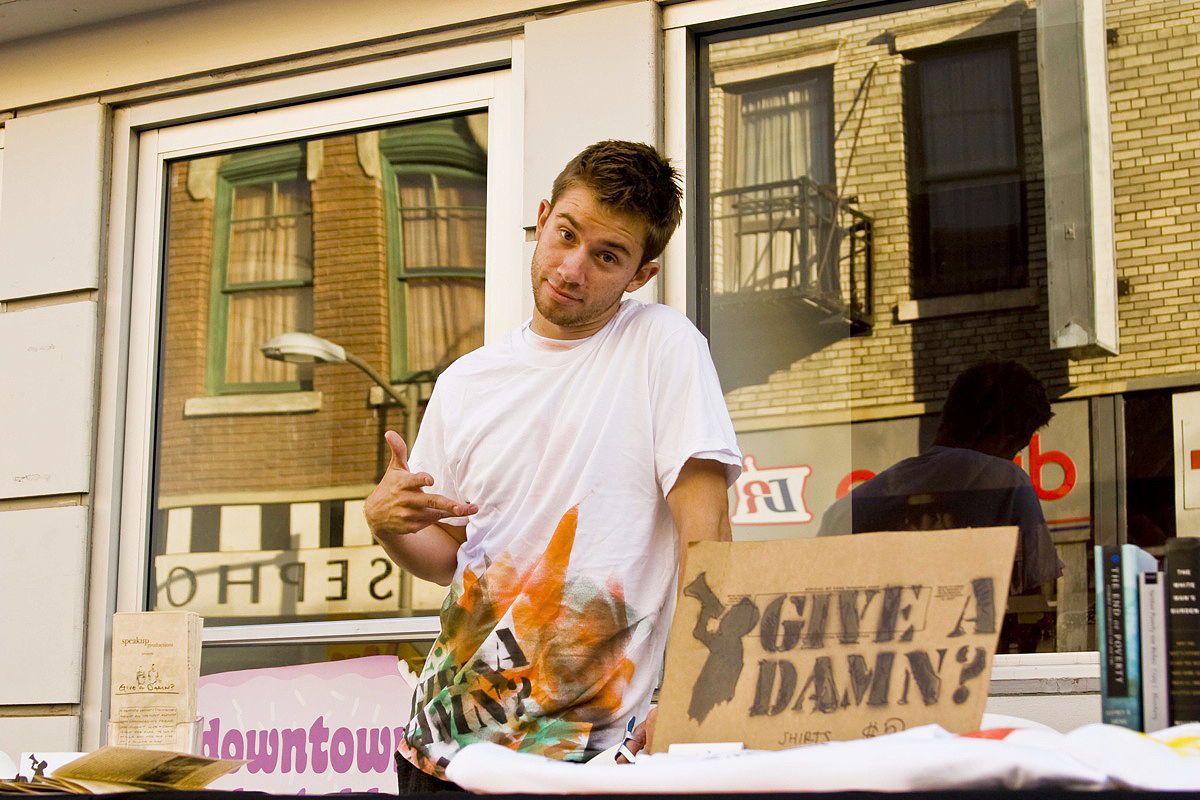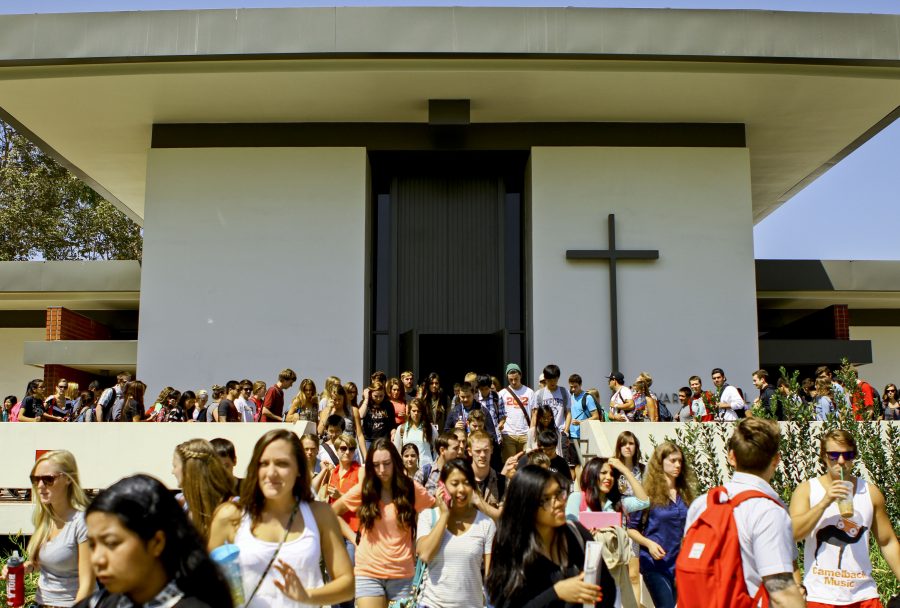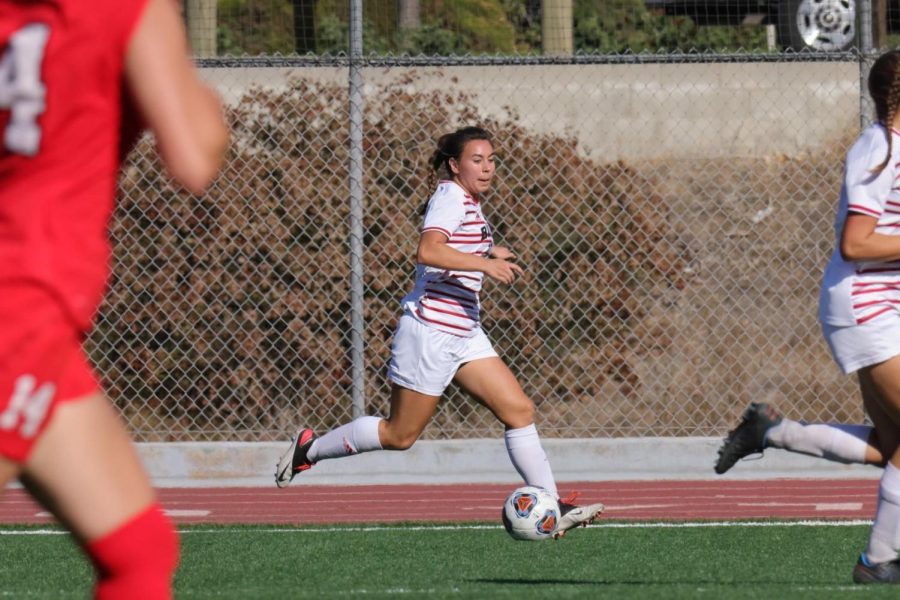
Dan Parris spoke at Biola on November 4, 2011 about “Give a Damn,” the documentary he and two others created about traveling the globe on $1.25 a day. | Courtesy of Dan Parris
On Friday, Nov. 4, director and Biola alumnus Dan Parris came to campus and allowed students and faculty to screen his documentary “Give a Damn.” In the film he informatively narrates that 1.4 billion people are living in extreme poverty, which is one-fifth of the total population of our planet.
Experiencing poverty firsthand
When defining “extreme poverty” the truth sinks in — 1.4 billion people face starvation, unsanitary living conditions and untreated, life-threatening diseases on a daily basis. As Parris toured a Kenyan slum as a newly reborn Christian teenager, this truth was more real to him than most other things had been in what he said was his “comfortable life” back in America. He was convicted to do something about what he saw and to one day return to Africa.
For Parris and his two friends, Rob Lehr and David Peterka, the fight against poverty was one they were willing to take on. In 2009, this trio plotted a specific path through several heavily impoverished areas in northern Africa. Along the way, they wanted to experience poverty themselves by spending time with the poor and living on a $1.25 every day of their journey, the standard daily amount of money an impoverished person lives off of.
However, attempts to raise money for their trip were proving to be a lost cause as numerous fundraisers and donation calls went primarily unnoticed. One day, Lehr came up with a radical plan: hitchhike from their home in St. Louis, Mo. to the eastern coast of the U.S., fly to London as planned, then hitchhike across Europe all the way to their next plane to Kenya, all the while living on only a $1.25 each day of the trip without counting the airborne travels. Inspired by Lehrʼs initiative, Parris was all for it and quickly recruited his church pal Peterka who instantaneously agreed to the crazed proposition.
Trekking across the world
So from St. Louis to the eastern seaboard, Parris, Lehr and Peterka made their way from state to state, documenting everything on the way. On the domestic journey they witnessed firsthand the “Africa in America,” as in the hundreds of homeless that live on the streets here in the United States. After each lost significant weight due to their lack of a food budget, the trio boarded a plane to London and began hitchhiking across Europe toward their next airborne departure which would drop them in the heart of Nairobi, Kenya.
Plane crash alters plans
The pinnacle of this story, however, takes place on day 28 of their cumulative journey, which was only their third day in Africa. Desiring to get some aerial shots for the documentary, Parris and Lehr went up in a single-engine airplane for a tour of the Kenyan countryside. Midway through the flight, they lost altitude unexpectedly and descended rapidly into a small city, ultimately crashing into a building. Lehr bravely pulled Parris from the wreckage but could not save the pilot, Frank Toews, or the plane’s mechanic, Ryan Williams. Both men are survived by their wives and children.
This plane crash turned their story upside down. While Lehr had cuts, bruises and several burns, Parris sustained severe internal injuries and a broken collarbone. He was immediately returned to the United States, accompanied by Lehr. Yet Peterka, who had not been aboard the plane, remained in Africa to complete the journey they all three had set out to do, continuing to live on a buck-25 a day. Left behind, he continued to document his travels and experiences with the incredible people of Africa.
Back in America, Parris faced many detrimental health issues with his body, dropping down to a mere 150 pounds. After the screening of “Give a Damn,” a now healthy Parris openly admitted that he had been able to experience firsthand what impoverished people face every day, even with his blessed health care pulling him through the darkest parts of his struggle. Lehr returned home with a newfound appreciation for life … and a more pronounced fear of death.
Parris explains that he wanted to make a documentary that would “leave nobody unaffected” after watching it. Heʼs tired of the idea that nothing can be done about the extensive poverty of our world. Whether it is because of fear or indifference, something stalls the process of inverting the human suffering we see on our television sets and in documentaries like “Invisible Children.”
While the plane crash was an unexpected turn, Parris says he trusts in God that it served some sort of purpose despite the awful losses of the pilot and mechanic, Toews and Williams.
“He gives and takes away,” Parris said. “Blessed be your name.”
A call to action
In an interview after the Biola Q-and-A, Parris commented that he wants everyone who sees the film, including Biola students, to ask themselves two questions: What breaks your heart? What makes you come alive?
“I think that is the beginning of figuring out what God wants them to do with their lives,” Parris said.
Parrisʼ production company Speak Up Productions began promoting “Give a Damn” earlier this year and is currently showing it at as many college campuses, high schools, churches and film festivals as they can. The desire is to also eventually display it on such mediums as Netflix and cable television.







